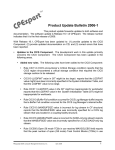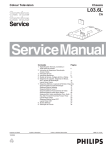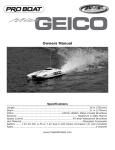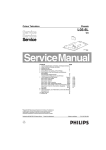Download CPExpert Release 16.2
Transcript
Product Update Bulletin 2006-2 This product update forwards updates to both software and documentation. The software update is Release 16.2 of CPExpert. The release number indicates that it is the first release of 2006. With Release 16.2, CPExpert has been updated to: (1) support z/OS Version 1 Release 8. (2) provide analysis of IBM’s new zIIP processor, (3) provide increased support for DB2 Version 8, (4) provide analysis of WebSphere MQ shared queues, (5) redesign logic of the CICS Component to decrease processing time, (6) provide updated documentation on CD; and (7) correct errors that have been reported. • • • Support z/OS Version 1 Release 8 (V1R8). z/OS V1R8 was made Generally Available (GA) by IBM in September 2006. Since Computer Management Sciences is a Business Partner with IBM, I normally can provide support for new IBM releases within 30 days of GA of the new IBM release. • All CPExpert components have been updated to provide support for z/OS V1R8. • All CPExpert documentation has been updated with references to applicable z/OS V1R8 documents from IBM, and relevant documents discuss the performance analysis differences between z/OS V1R8 and z/OS V1R7. • Section 4 (Analyzing the Workload Manager) of the WLM Component User Manual has been updated with a discussion of the System z9 Integrated Information Processor (zIIP) available with System z9, and supported with z/OS V1R8 (also supported with z/OS V1R6 and z/OS V1R7, with appropriate APARs). Support IBM’s new System z9 (BC and EC) processors. IBM introduced the System z9, including the Business Class (BC) and Enterprise Class (EC) processors. • All CPExpert components have been updated to provide support for System z9 processors. • All CPExpert documentation has been updated with references to applicable System z9 IBM documentation. Updates to the WLM Component. The following rules have been added to the WLM Component: © Copyright 2006, Computer Management Sciences, Inc. October, 2006 1 CPExpert Product Update Bulletin 2006-2 • Rule WLM040 (Percent fixed pages in 16MB-2GB was larger than guidance)1 reports that the percent of fixed pages in 16MB-2GB is so large that MVS might encounter a shortage of pageable storage. • Rule WLM550 (Processor use (CP+zIIP) was a major cause of response delay) reports that the average processor time per transaction for zIIP-eligible work was a major cause of transaction response delay. • Rule WLM551 (Goal may be unrealistic - average processor use was high) reports that the average processor time per transaction for zIIP-eligible work was more than 75% of the response goal for the service class period. • Rule WLM552 (Average processor use was higher than response goal) reports that the average processor time per transaction for zIIP-eligible work was higher than the response goal for the service class period. • Rule WLM560 (zIIP-eligible work waited for access to a zIIP processor) that zIIPeligible work waiting for access to a System z9 Integrated Information Processor (zIIP) was a major reason the service class did not achieve its performance goal. • Rule WLM561 (Higher Importance zIIP-eligible work used a zIIP processor) reports that zIIP-eligible work waited for access to a System z9 Integrated Information Processor (zIIP), and other zIIP-eligible work with a higher Goal Importance used a zIIP processor. • Rule WLM562 (Same Importance zIIP-eligible work used a zIIP processor) reports that zIIP-eligible work waited for access to a System z9 Integrated Information Processor (zIIP), and other zIIP-eligible work with the same Goal Importance used a zIIP processor. • Rule WLM570 (Significant central processor was used by zIIP-eligible work) reports that a significant amount of central processor (CP) time was used by zIIP eligible work. • Rule WLM575 (Significant zIIP-eligible work executed on a CP) reports that a significant amount of zIIP-eligible work executed on a central processor (CP) rather than executing on a System z9 Integrated Information Processor (zIIP). • Rule WLM675 (Incorrect CPU Busy times were reported for LPAR) reports that one or more coupling facility LPARs used a shared Internal Coupling Facility (ICF) processor. The synchronous delays times to LPARs using the coupling facility were sufficiently large that incorrect CPU time would be reported for LPARs using the coupling facility. 1 Thanks to Andreas von Imhof (Rabobank, Netherlands) for suggesting this analysis and providing sample data. © Copyright 2006, Computer Management Sciences, Inc. October, 2006 2 CPExpert Product Update Bulletin 2006-2 • • Rule WLM850 (WLM Management specified but VARYCPU=YES not specified) reports that the LPAR was running in Intelligent Resource Director (IRD) mode, and was using WLM LPAR Weight Management. However, VARYCPU=YES apparently was not specified in the IEAOPTxx member for the LPAR. Consequently, WLM Vary CPU Management apparently was not operational. • Renamed Rule WLM550 to Rule WLM542 and renamed Rule WLM551 to Rule WLM543, so a new rule sequence dealing with zIIP analysis can start with Rule WLM550. • Added the CHKZIIP guidance variable to specify that CPExpert should analyze potential zIIP performance problems. Updates to the WMQ Component. The following rules have been added2 to the WMQ Component: • Rule WMQ510 (Large number of requests were queued for a DB2 server) reports that thread requests could be spending an excessive amount of time waiting for a server task to process the SQL part of the request. • Rule WMQ515 (High average wait time for a DB2 server to select requests) reports that the average wait time for request selection by a DB2 server was larger than IBM’s recommended value. • Rule WMQ516 (High maximum wait time for a DB2 server to select requests) reports that the maximum wait time for request selection by a DB2 server was larger than IBM’s recommended value. • Rule WMQ520 (DB2 server tasks experienced abends) reports that queued requests were re-queued to other server tasks as a result of the abnormal termination of a DB2 server task. • Rule WMQ530 (Deadlocks were detected in a DB2 server) reports that deadlocks occurred in the DB2 server. • Rule WMQ540 (High average time for a DB2 server to process update requests) reports that there was a high average time for a DB2 server to process update requests (update requests include UPDATE, DELETE, and WRITE requests). 2 Thanks to Yaohua Hu (Insurance Services Organization) for providing test data that allowed this analysis to be developed. © Copyright 2006, Computer Management Sciences, Inc. October, 2006 3 CPExpert Product Update Bulletin 2006-2 • • Rule WMQ600 (WebSphere MQ coupling facility structure was full) reports that a coupling facility structure full condition was encountered by the WebSphere MQ subsystem. • Rule WMQ610 (Number of application structures is approaching the maximum) reports that the number of application structures defined to a coupling facility was approaching the maximum allowed. • Rule WMQ611 (Large number of application structures were defined) reports that the more application structures were defined to a coupling facility than the number of structures that IBM recommends. • Rule WMQ620 (Number of shared queues in structure is approaching the maximum) reports that the number of shared queues defined to a coupling facility WebSphere MQ application structure was approaching the maximum allowed. • Rule WMQ630 ( MINSIZE is less than SIZE for CSQ_ADMIN structure) reports that the MINSIZE specification was less than the SIZE specification when the CSQ_ADMIN structure was defined, and CPExpert logic inferred that ALLOWAUTOALT(YES) was specified in the CFRM policy for the CSQ_ADMIN structure. • Rule WMQ631 (MINSIZE is significantly less than SIZE for application structure) reports that the MINSIZE specification was significantly less than the SIZE specification for a WebSphere MQ application structure, and CPExpert logic inferred that ALLOWAUTOALT(YES) was specified in the CFRM policy for the application structure. • Rule WMQ632 (SIZE is more than double INITSIZE for WebSphere MQ structure) reports that the SIZE specification was more than double the INITSIZE specification for a WebSphere MQ application structure, with potentially wasting a significant amount of CF storage • Rule WMQ650 (ALLOWAUTOALT(YES) apparently was not specified for structure) reports that ALLOWAUTOALT(YES) apparently was not specified for a WebSphere MQ structure. Since the default is ALLOWAUTOALT(NO), the effect is to disallow Automatic Alter for the structure. • Rule WMQ652 (FULLTHRESHOLD value might be incorrect for structure) reports that the FULLTHRESHOLD value might have been incorrectly specified for a WebSphere MQ structure, and that an actual structure full situation could occur before the percent structure full condition can be alleviated. Updates to the DB2 Component. The DB2 Component has been updated in the following areas. © Copyright 2006, Computer Management Sciences, Inc. October, 2006 4 CPExpert Product Update Bulletin 2006-2 • Support for DB2 UDB for z/OS Version 8. All code and documentation have been updated to support DB2 UDB for z/OS Version 8. CPExpert previously supported DB2 UDB for z/OS Version 8 in “toleration” mode. The updated code and documentation provide analysis and documentation specific to Version 8. • Added new rules. The following rules have been added to the DB2 Component: • Rule DB2-204 (Work file requests were rejected because of buffer resources) reports that requests for work files were rejected during all merge passes because of insufficient buffer resources • Rule DB2-212 (Pool expansion failed because of insufficient virtual storage) reports that a request to expand a virtual buffer pool, or to create or expand a hiperpool, failed because there was insufficient virtual storage to satisfy the request. • Rule DB2-246 (Parallel groups fell back to sequential mode at RUN time) reports that parallel groups had a planned degree greater than one at BIND time, but fell back to sequential mode at RUN time because of storage shortage or contention on the buffer pool. • Rule DB2-247 (Parallel degree was reduced due to buffer shortage) reports that parallel groups executed in a parallel degree less than planned at BIND time, due to the shortage of storage or contention on the buffer pool. • Rule DB2-266 (Work file requests were rejected because of buffer resources) reports that there was a high Class 24 (EDM LRU) latch contention rate, which often means that the EDMBFIT parameter was improperly set to YES (telling DB2 to use the Best Fit algorithm). • Rule DB2-514 (Insufficient log space may have been specified) reports that the log space may be too small. • Rule DB2-516 (Checkpoints were taken too often) reports that checkpoint control parameters caused checkpoints to be taken more frequently than IBM recommends. • Rule DB2-517 (System paging for the DB2 log output buffer) reports that there was system paging for the DB2 log output buffer. • Rule DB2-620 (Secondary coupling facility write requests failed -storage) reports that coupling facility write requests to a DB2 duplexed structure could not complete because of a shortage of available storage in the secondary coupling facility structure. © Copyright 2006, Computer Management Sciences, Inc. October, 2006 5 CPExpert Product Update Bulletin 2006-2 • • Rule DB2-645 (Parallel portion of access path reformulated, configuration) reports that DB2 reformulated the parallel portion of the access path because the sysplex configuration at run time was different from the sysplex configuration at BIND time, or because there was a change in the number of active DB2 members from BIND time to run time. • Rule DB2-646 (Parallel portion of access path reformulated, buffers) reports that DB2 reformulated the parallel portion of the access path because there was not enough buffer pool resource at run time. Updates to the CICS Component. The CICS Component has been improved to decrease the CPU time required to execute the Component. When the CICS Component was designed in 1991, the environment was SAS Version 5.18, and that version of SAS had a limited ability to support a large number of variable names and arrays. Additionally, most users of the CICS Component had only a few production CICS regions and those users were content to analyze only a small number of regions. Considering that some regions are production regions and some are test regions, CPExpert users wanted to select individual regions to analyze. Considering the SAS restrictions in 1991 and CPExpert user desires, the original design of the CICS Component was essentially to analyze a single CICS region at a time. As SAS has improved over the years, the severe restrictions on number of variable names and arrays has been eliminated. The CICS Component of CPExpert was improved to analyze all regions at a time (using the ALL_CICS=Y option). Specifying ALL_CICS=N (the default), allowed users to analyze only selected CICS regions (using the APPLID1-APPLIDn specification), but these regions would be analyzed in a single execution of the CICS Component. Some CPExpert users now have hundreds of CICS regions, consisting of a mixture of production and test regions. These folks use the CICS Component to analyze a large number of CICS regions each day. These users were not comfortable with having to specify each region to the CICS Component, when their naming convention identified regions in a structured fashion. In CPExpert Release 15.1, the CICS Component was enhanced by allowing a “wild-card” technique for identifying regions to analyze (that is, the first “n” characters of a group of regions could be specified, rather than individually specifying all regions). This method was implemented by the ALL_CICS=W guidance. Unfortunately, the original design of the CICS Component did not scale well. The processing time required to analyze performance problems with CICS regions increased proportionally to the number of regions. When 75 to 80 regions were selected for analysis (out of several hundred regions in the CICS interval statistics), the processing time became unacceptably large. © Copyright 2006, Computer Management Sciences, Inc. October, 2006 6 CPExpert Product Update Bulletin 2006-2 I have redesigned the overall operational structure of the CICS Component. With the new approach, the CICS Component will select and analyze all specified regions (whether specified by “wild-card” or uniquely identified to CPExpert) in a single pass of the CICS interval statistics. With the new design, the processing time will decrease significantly if you are using CPExpert to analyze a large number of CICS regions. Please see details in the Changes section and further instruction in Section 3 (Specifying Guidance Variables) in the CICS Component User Guide • Updates to the DASD Component. The main changes to the DASD Component for CPExpert Release 16.2 are to correct minor errors reported by users. • Updated documentation on CD. This release provides all updated documentation to reflect new or revised rules. The CPExpert documentation is accessible via Adobe Acrobat Reader. A free version of Adobe Acrobat Reader is available at http://www.adobe.com/products/acrobat/readstep2.html. • Add a log of changes to code. I’ve added a log of changes to the CPExpert code for Release 16.2. This log is titled CHANGES and shows each module changed (except when the change is minor). Interested users can review the CHANGES log to see what code changes have been made, and can easily identify new guidance variables. I’ve followed the MXG model for releases (that is, the CHANGES log shows changes in the new release, while the CHANGESS log is an accumulation of changes). Additionally, I’ve described additions to USOURCE members in the CHANGES log. • Add a log of errors reported. I’ve added a log of all errors reported by users. This error log is in the GENER161 module in SOURCE. FTP download CPExpert Release 16.2 (both code and documentation) is available via ftp download from my ftp server. If you prefer this method of obtaining the update, please send an email to [email protected] to obtain instructions for ftp download, obtain your user id, and obtain your password. If you have requested ftp download in past, I will automatically send you ftp download instructions. Installation I suggest that you use the following steps to install Release 16.2: © Copyright 2006, Computer Management Sciences, Inc. October, 2006 7 CPExpert Product Update Bulletin 2006-2 • Create a new PDS titled "prefix.CPEXPERT.V162.SOURCE". • Create a new PDS titled "prefix.CPEXPERT.V162.USOURCE". • Install CPExpert into the "prefix.CPEXPERT.V162.SOURCE" using the normal installation procedures described in the CPExpert Installation Guide. • Copy your old USOURCE members into "prefix.CPEXPERT.V162.USOURCE". This step should be done so you do not have to recreate all of your unique parameters3. Please remember that you MUST change any of the CHKxxxx guidance variables if you wish the WLM Component to analyze areas other than the basic analysis of the Service Policy and service class period performance constraints. • If you elected to receive updates to CPExpert on CD, the software is distributed on the CD that contains the CPExpert user documentation. • Installing CPExpert from CD to MVS. Copy the source.ebc file from cd:\software\source.ebc as binary, to CPEXPERT.TAPE.REL162, allocated as DSORG=PS,RECFM=FB,LRECL=80,BLKSIZE=0,AVGREC=K,SPACE(80,(150,50)), DSN=CPEXPERT.REL162.IEBUPDTE. The source.ebc file is in standard IEBUPDTE format. Use the JCL described in Exhibit 2-1 of the CPExpert Installation Guide to install the CPExpert software. Copy your old USOURCE members as described above. • Installing CPExpert from CD to PC: Copy the cd:\software\source\ on the CD to prefix\cpexpert\rel162\source. Copy your old USOURCE members as described above. Make sure that you update your USOURCE(GENGUIDE) member to specify %LET SOURCE =user_directory; statement to point to the new SOURCE directory. • If you have installed the CPExpert option to produce output to SAS Output Delivery System (ODS) and if you have exercised the LINKPDF option so you can “click” on a rule in the html output to see the documentation, please remember to load the new documentation onto your system. • If you chose to implement the xxxHTML option (e.g., WLMHTML) to provide your own SAS ODS HTML statement parameters, please place your own macros into USOURCE and concatenate the USOURCE pds ahead of the SOURCE pds. 3 The exception to this statement is if you chose to use the “yesterday” option in selecting data. The “yesterday” calculation is done by a PREVIOUS macro contained in USOURCE(GENGUIDE). The PREVIOUS macro is placed in USOURCE so you can select “yesterday” as the immediate previous day, or can define “yesterday” as any other previous day you chose. Placing the PREVIOUS macro in USOURCE(GENGUIDE) allows you to make such a modification, without your altering a SOURCE member. Consequently, if you copy your old USOURCE(GENGUIDE) member to CPEXPERT.V162.USOURCE, you may wish to append the PREVIOUS macro from the Release 15.1 USOURCE into your USOURCE(GENGUIDE) member. © Copyright 2006, Computer Management Sciences, Inc. October, 2006 8 CPExpert Product Update Bulletin 2006-2 Special note to SAS/ITRM users of CPExpert running the CICS Component: With CPExpert Release 16.2, you must have the following MXG file structure in your performance data base. TYPE78VS RMF GLOBAL VIRTUAL STORAGE USE SAS gives an invalid return to the %sysfunc(exist(file)) macro with SAS/ITRM, so the above files must be in your pdb, even if they are null files. Thanks I would like to say "Thank you" to the following individuals. These folks have discovered errors, proposed new features, graciously sent me test data, or suggested documentation changes since the last Update Bulletin: Rexaldo.N.Avendano (Kaisesr Permanente, CA) Glenn Bowman (Wakefern Food Corporation, NJ) Craig Collins (State of Wisconsin, WI) Michael Duffy (Lloyds TSB, United Kingdom) Heather Dyson (Computer Associates, Inc., VA) Kris Ferrier (State of Washington, WA) Ralph Gifford (AIG Technologies, Inc., NJ) Paul Gordon (Bank of America, VA) Wayne Hammond (Bank of America, GA) Chuck Hopf (Bank of America, TX) Yaohua Hu (Insurance Services Organization, NJ) Sam Knutson (GEICO, MD) Hugh Lapham (Royal Canadian Mounted Police, Canada) Barry Merrill (Merrill Consultants, TX) Seth Miller (AIG Technologies, Inc., NJ) Jim Murphy (Wakefern Food Corporation, NJ) Al Sherkow (I/S Management Strategies, Ltd., WI) Marty Stahl (Social Security Administration, MD) Peter Stuber (HUK-Coburg, Germany) Andreas von Imhof (Rabobank, Netherlands) Bruce Widlund (Merrill Consultants, TX) Please send me an email if you have suggestions, you want new features, or you would like to see more or different reporting done by CPExpert. Best regards, Don Deese © Copyright 2006, Computer Management Sciences, Inc. October, 2006 9 CPExpert Product Update Bulletin 2006-2 Technical note: While not related to CPExpert, you should read Washington System Center Flash 10526 (z/OS Performance: Capture Ratio Considerations for z/OS and IBM System z Processors). This Flash discusses the RMPTTOM value specified in IEAOPTxx. The Flash suggests that the default setting of 1000 should be changed to a larger value. Increasing the RMPTTOM value reduces the frequency at which SRM interrupts occurs. With fast systems (particularly with System z9), the SRM normally does not need to gain control as frequently as indicated by the default setting. Reducing the frequency at which the SRM gains control can significantly reduce the system overhead. IBM suggests that RMPTTOM be set to 2000 (and this will be the new default). Depending on the environment and performance goals, IBM suggests that the RMPTTOM might be set higher than 2000 (and even as high as 20000 for test LPARs only) without serious adverse effect. IBM does caution (1) you should NOT set the value above 20000 in any environment and (2) that you should carefully monitor system performance after making any changes. Please send me an email if you need further explanation of the effects of the RMPTTOM setting. Computer Management Sciences, Inc. 6076-D Franconia Road Alexandria, Virginia 22310 (703) 922-7027 FAX: (703) 922-7305 www.cpexpert.com Don_Deese@ cpexpert.com © Copyright 2006, Computer Management Sciences, Inc. October, 2006 10


















